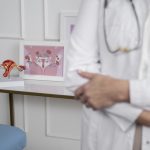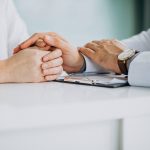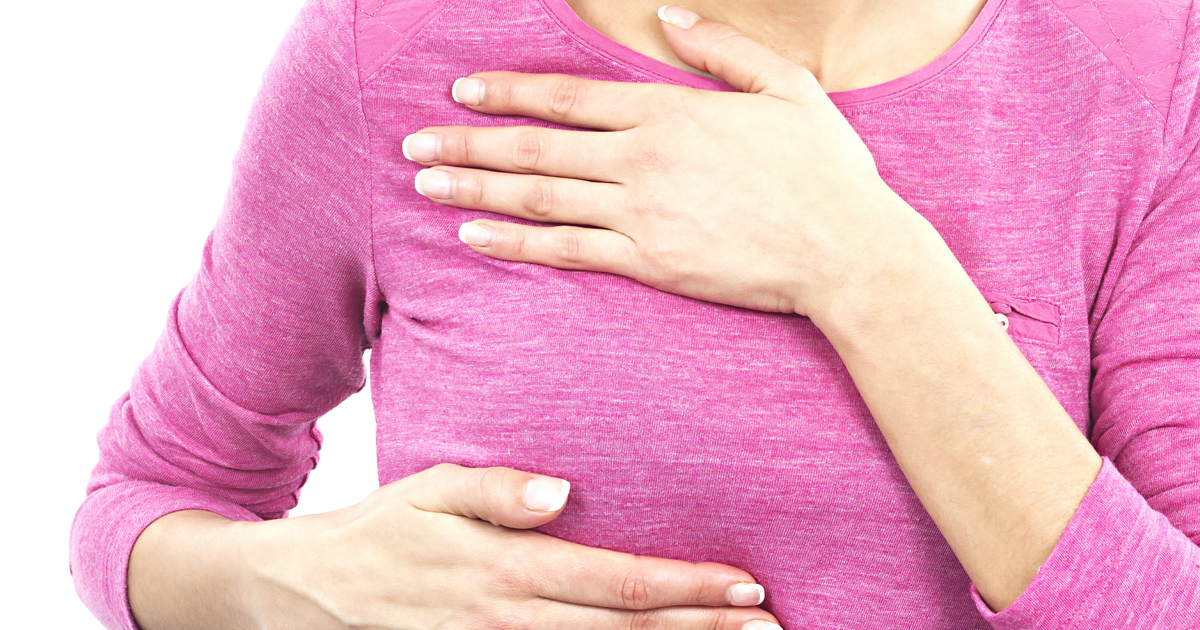1. Who are more prone to have breast cancer?
Ans: Women with following risk factors are more prone to get breast cancer.
- Age 55 and older
- Certain inherited genes: BRCA1 and BRCA2
- Having a family history of breast cancer
- Starting menstruation (periods) before age 12
- Going through menopause after age 55
- Having radiation to your chest
- Lifestyle-related breast cancer risk factors
- Drinking alcohol
- Being overweight or obese
- Lack of Physical activity
- Not having children or had first child after age 30
- Use of Oral contraceptives
- Taking hormone therapy after menopause
2. How common is breast cancer in India? Which population is more affected- rural or urban?
Ans:
- Worldwide
- Most common cause of cancer.
- 2nd leading cause of cancer death
- India:
- Most common cause of cancer & cancer death among females
- Incidence: 27/100,000 or 1.44 lakh new cases every year
- 5 years Prevalence: 3.96 lakh new cases every year
- Breast Cancer is a real burning issue in India due to several reasons:
- Age shift (More young ladies affected)
- Rising numbers of cases of breast cancer in India
- Late presentation (This directly decreases long term survival of the patient
- Lack of awareness and Screening (Screening is the single most important factor responsible for better survival of patients in the west)
- Aggressive cancers in young (Generally, the younger the age below menopause, the more aggressive the cancer)
- Due to differences in lifestyle of rural and urban women, breast cancer is more common in urban women, although diagnosis is increasing in rural women also with rising incidence and awareness. Breast cancer is the commonest cancer in urban Indian females, and the second commonest in the rural Indian women.
3. Which age groups of women are likely to get breast cancer?
Ans: Breast cancer incidence generally increases with age. Ninety-five percent of new cases occurs in women 40 years of age and older. Younger women are generally do not considered being at risk for breast cancer, and in fact, just ~ 5% of all breast cancer cases occur in women under 40 years old.
4. Is cancer breast hereditary?
Ans: Yes, breast cancer is sometimes caused by inherited gene mutations (changes). In cross-sectional studies of adult populations, 5% to 10% of women have a mother or sister with breast cancer, and about twice as many have either a first-degree relative (FDR) or a second-degree relative with breast cancer. Thus, hereditary breast cancer makes up about 5% to 10% of all breast cancer. Women who have certain gene mutations, such as a BRCA1 or BRCA2 mutation, have an increased risk of breast cancer. Also, women who have had breast cancer in one breast have an increased risk of developing breast cancer in the other breast. These women also have an increased risk of ovarian cancer, and may have an increased risk of other cancers. Men who have a mutated gene related to breast cancer also have an increased risk of this disease.
There are tests that can detect (find) mutated genes. These genetic tests are sometimes done for members of families with a high risk of cancer.
5. What are the main symptoms to suspect breast cancer?
Ans. Possible signs of breast cancer include a lump or change in the breast.
Breast cancer may cause any of the following signs and symptoms. Check with your doctor if you have any of the following problems:
- A lump or thickening in or near the breast or in the underarm area.
- A change in the size or shape of the breast.
- A dimple or puckering in the skin of the breast.
- A nipple turned inward into the breast.
- Fluid, other than breast milk, from the nipple, especially if it’s bloody.
- Scaly, red, or swollen skin on the breast, nipple, or areola (the dark area of skin that is around the nipple)
- Dimples in the breast which look like the skin of an orange, called peau d’orange.
Other conditions that are not breast cancer may cause these same symptoms.
6. If I have a suspicion of cancer breast, what should I do...?
Ans: A doctor should be seen if changes in the breast are noticed. The following tests and procedures may be used:
- Physical & breast examination, history: An examination of the body to check general signs disease and examination of breast for presence of lump. A history of the patient’s health habits and past illnesses and treatments will also be taken.
- Ultrasound exam: A procedure using high-energy sound waves to take picture of internal tissues or organs.
- Mammogram: An x-ray of the breast.
- MRI (magnetic resonance imaging): A procedure that uses a magnet, radio waves, and a computer to make a series of detailed pictures of areas inside the body.
- Blood chemistry studies: A procedure in which a blood sample is checked to measure the amounts of certain substances which can detect presence of some diseases.
- Biopsy: The removal of cells or tissues so they can be viewed under a microscope by a pathologist to check for signs of cancer.
7. What precautions should I take to prevent breast cancer?
Ans: You can lower your risk of breast cancer by changing those risk factors that can be changed.
Body weight, physical activity, and diet have all been linked to breast cancer, so these might be areas where you can take action.
At this time, the best advices to possibly reduce the risk of breast cancer is to:
- Get regular, intentional physical activity.
- Limit your calories intake
- Prefer diet that is rich in vegetables, fruit, poultry, fish, and low-fat dairy products
- Reduce your lifetime weight gain
Early breast cancer detection can increase the likelihood of successful treatment.
Recommendations for early breast cancer detection (American Cancer Society)
- Women age 40 and older should have a screening mammogram every year and should continue to do so for as long as they are in good health.
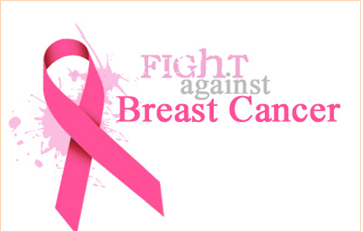
- Women in their 20s and 30s should have a clinical breast exam (CBE) as part of a periodic (regular) health exam by a health professional, at least every 3 years.
- After age 40, women should have a breast exam by a health professional every year.
8. Is there a genetic test for breast cancer?
Ans: Yes. Several different tests are available to find mutation in BRCA1 and BRCA2 genes, including tests that look for a known mutation in one of the genes (i.e., a mutation that has already been identified in another family member) and tests that check for all possible mutations in both genes. DNA (from a blood or saliva sample) is needed for mutation testing. The sample is sent to a laboratory for analysis. It usually takes about a month to get the test results.
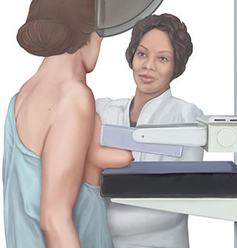
Genetic testing helps find out if someone has a faulty gene that puts them at high risk of developing certain types of cancers.
It is only considered for people who have already been assessed at a family history clinic or cancer genetics centre and who know they are at high risk.
When testing is done, a relative who has breast or ovarian cancer is tested first to find the fault on the gene. If a fault is found, then other blood relatives may want to have a predictive genetic test.
9. What is a mammography?
A mammogram is an x-ray examination of the breasts, used to detect and diagnose breast diseases. Mammography is the most effective method of detecting cancer at an early stage, before the woman or a physician can feel it.
10. How is a biopsy taken?
Ans: You may need a breast biopsy if the cause of your breast lump cannot be diagnosed using a mammogram or ultrasound. A biopsy is a procedure that involves removing a tissue sample from the lump for further testing.
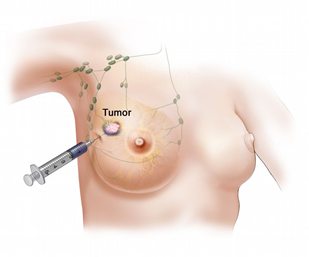
A core needle biopsy (CNB) is often used to get the tissue sample. Sometimes a fine-needle aspiration (FNA) biopsy may be used to get the tissue sample, or to drain a cyst.
To obtain the sample, a hollow needle is inserted through your skin and into the area being examined. Ultrasound or X-rays will be used to help the doctor or surgeon guide the needle to exactly the right place.
When the needle is in position, it will ‘suck out’ a sample of tissue. If you have a needle biopsy, a local anaesthetic will usually be used to numb the area so that you won’t feel pain or discomfort.
11. What is the treatment of breast cancer?
Ans: There are different types of treatment for patients with breast cancer.
Following is the list of standard treatments commonly used:
- Surgery
Most patients with breast cancer have surgery to remove the cancer from the breast. Some of the lymph nodes under the arm are usually taken out and looked at under a microscope to see if they contain cancer cells.
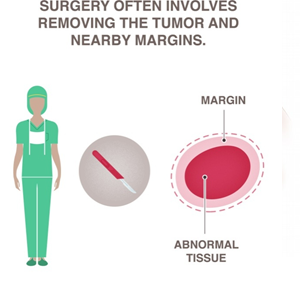
Commonly used surgical procedures are breast conserving surgery and simple mastectomy (lumpectomy).
Chemotherapy may be given before surgery to remove the tumor. When given before surgery, chemotherapy will shrink the tumor and reduce the amount of tissue that needs to be removed during surgery.
Even if the doctor removes all the cancer that can be seen at the time of the surgery, some patients may be given radiation therapy, chemotherapy, or hormone therapy after surgery to kill any cancer cells that are left.
- Radiation therapy
Radiation therapy is a cancer treatment that uses high-energy x-rays or other types of radiation to kill cancer cells or keep them from growing. There are two types of radiation therapy. External radiation therapy uses a machine outside the body to send radiation toward the cancer. Internal radiation therapy uses a radioactive substance sealed in needles, seeds, wires, or catheters that are placed directly into or near the cancer. The way the radiation therapy is given depends on the type and stage of the cancer being treated.
- Chemotherapy
Chemotherapy is a cancer treatment that uses drugs to stop the growth of cancer cells, either by killing the cells or by stopping them from dividing. When chemotherapy is taken by mouth or injected into a vein or muscle, the drugs enter the bloodstream and can reach cancer cells throughout the body (systemic chemotherapy). The way the chemotherapy is given depends on the type and stage of the cancer being treated.
- Hormone therapy
Hormone therapy is a cancer treatment that removes hormones or blocks their action and stops cancer cells from growing. Hormones are substances made by glands in the body and circulated in the bloodstream. Some hormones can cause certain cancers to grow.
- Targeted therapy
Targeted therapy is a type of treatment that uses drugs or other substances to identify and attack specific cancer cells without harming normal cells. Monoclonal antibodies and tyrosine kinase inhibitors are two types of targeted therapies used in the treatment of breast cancer.

